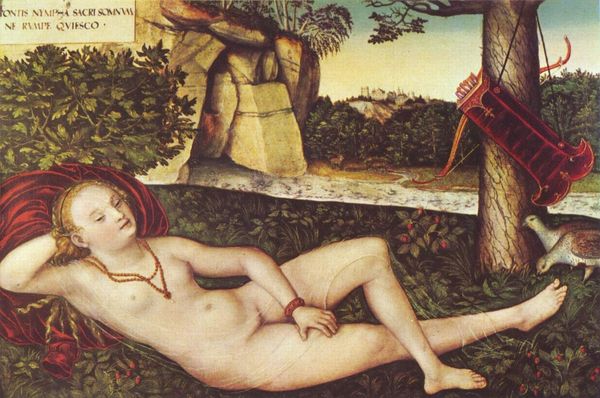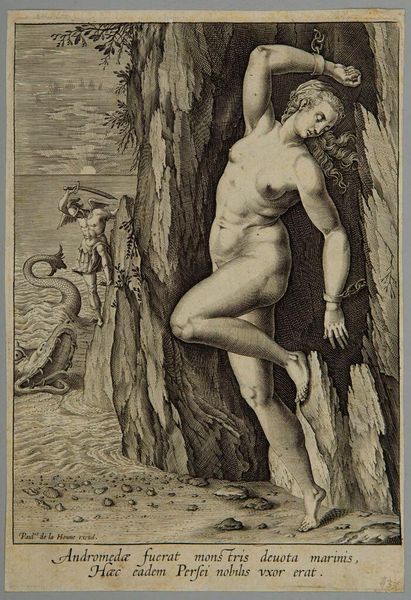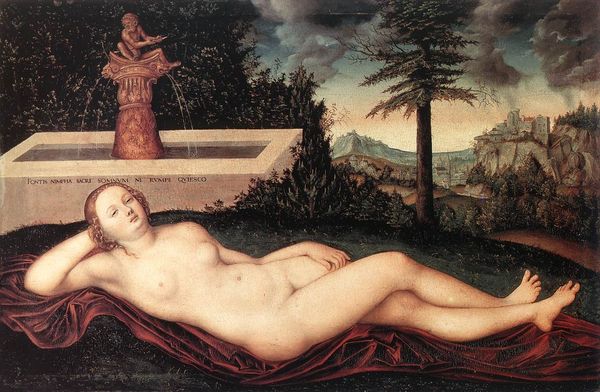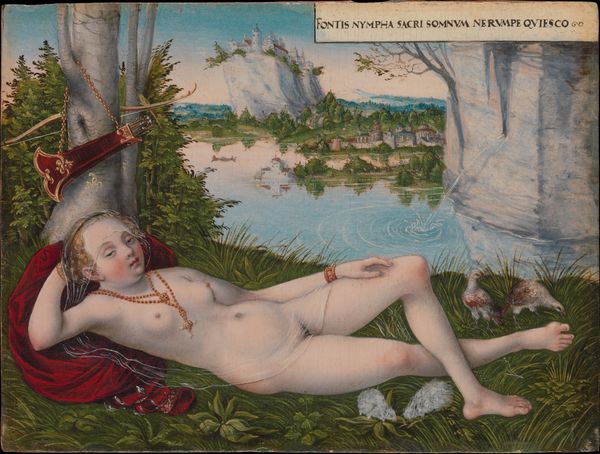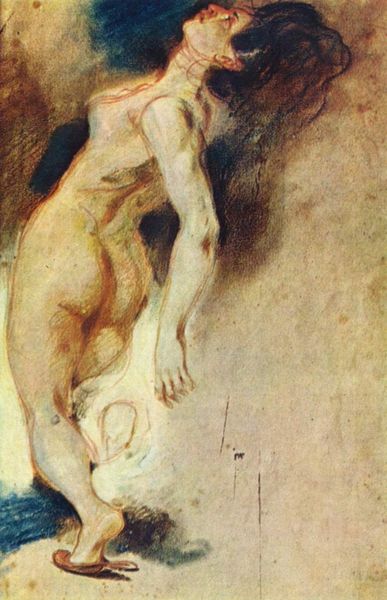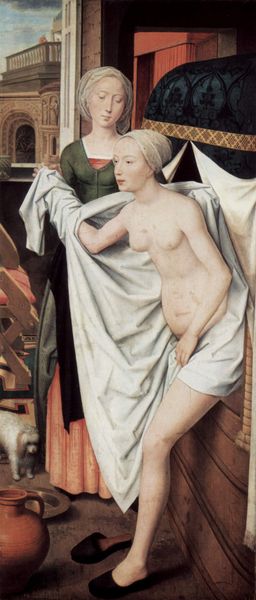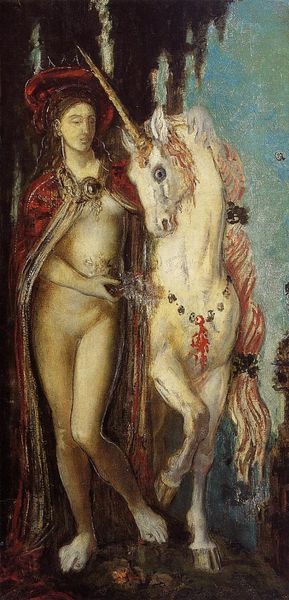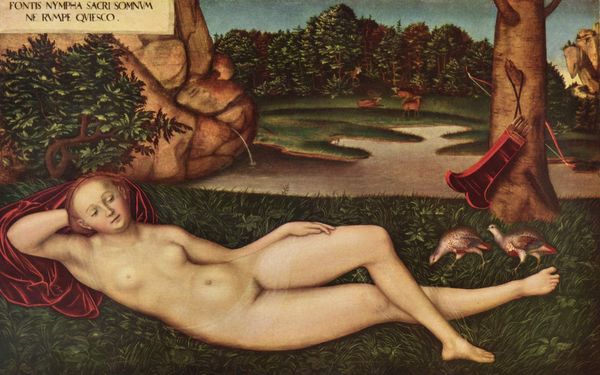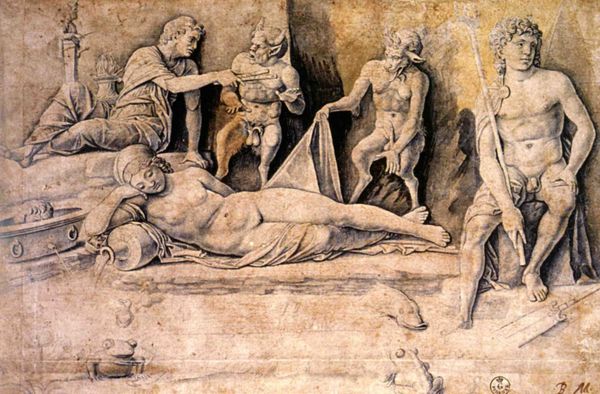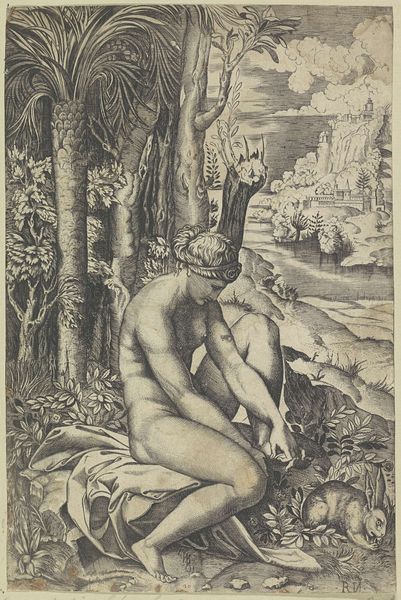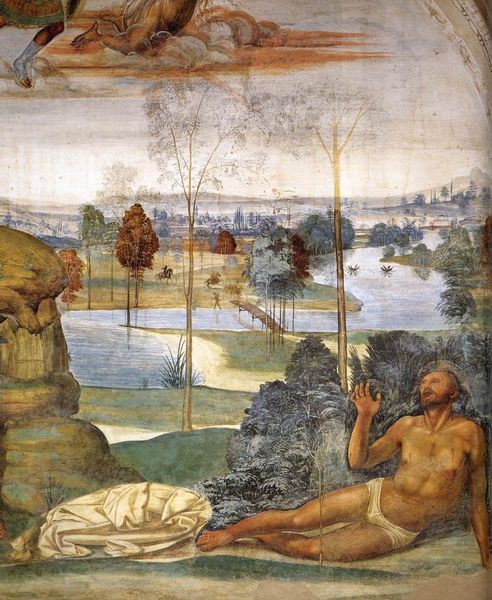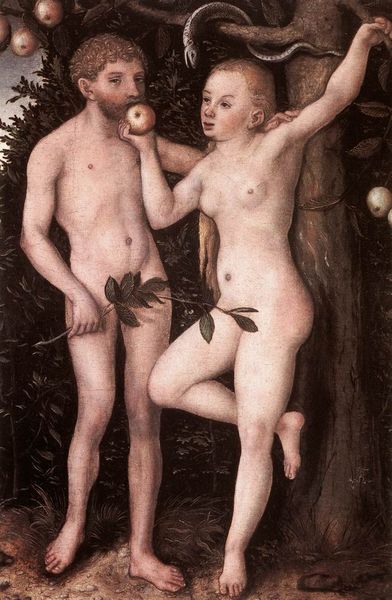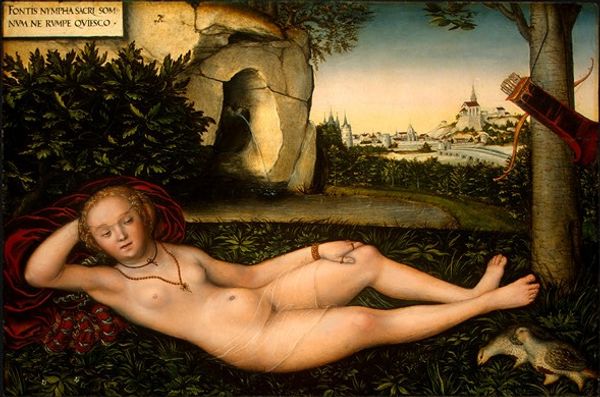
painting, oil-paint
#
portrait
#
allegory
#
painting
#
oil-paint
#
landscape
#
mannerism
#
painted
#
figuration
#
female-nude
#
history-painting
#
italian-renaissance
#
nude
#
erotic-art
Copyright: Public domain
Curator: Lucas Cranach the Elder painted this oil painting, titled “Water Nymph Resting,” around 1530. What do you think? Editor: The materiality seems rather understated, almost flattened. I’m interested in the subtle interplay of textures between the nymph’s skin and the cool, somewhat sparse, landscape. It projects both sensuality and restraint. Curator: The sensuality aligns with the mythological connotations, particularly the echoes of erotic art conventions—nymphs have long stood as symbols for the uninhibited feminine spirit. Note how the rosary juxtaposes spiritual commitment with her nakedness. It’s charged! Editor: It is, but the technique feels rather more complex. It is so cleanly, painstakingly applied. Did Cranach use layers of thin glazes to achieve that smooth surface? Or was it the kind of finely ground pigment available at the time that contributes to that smooth appearance? What support is he painting on? Curator: That smoothness might have to do with evoking classical ideals. The nude nymph and the Latin inscription at the upper right, "FONTIS NYMPHA SACRI SOMNUM NE RVMPE QUIESCO," speak of a humanist revival—classical forms imbued with new meaning, while evoking that sense of the ideal, timeless beauty. Editor: Precisely! Though this pursuit of perfection does result in the obscuring of labor involved in creation of this kind of panel painting. The social relations and economic structure surrounding art making are conveniently, neatly concealed. Curator: Yet, the landscape offers a kind of grounded reality. The detailed trees, the meticulously depicted animals at her feet—do those ground the otherwise airy allegory, reminding us that earthly delights coexist with higher ideals? Editor: In terms of materials, if you look closely, that rosy, almost luminescent, effect, has much to do with the preparation of surface. How did this workshop prepare the panels that lend themself to a visual allegory so appealing to his patrons, even now, hundreds of years later. Curator: Thinking about how the classical intertwines with Christian elements, along with its subtle, carefully made qualities, does illuminate aspects of early 16th century beliefs. Editor: Agreed, it really goes to show that beneath seemingly ideal images, the historical details are embedded into how it was materialized into the world.
Comments
No comments
Be the first to comment and join the conversation on the ultimate creative platform.
